A Nilometer in ancient Egypt was a structure for measuring the Nile’s clarity and water level during the annual flood season or “Akhet”. If the water level was low, there would be famine. If it was too high, it would be destructive.
The Nilometer is an ancient instrument used to measure the waters of the Nile so Egyptian farmers would know whether to expect famine or flood.
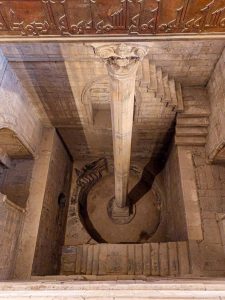
The Nilometer is an ancient Device for Determining Taxes Discovered in Egypt
The Nilometer was used to predict harvest (and taxes) linked to the rise and fall of the Nile River.
The Nilometer was used for roughly a thousand years to calculate the water level of the river during the annual flooding of the Nile.
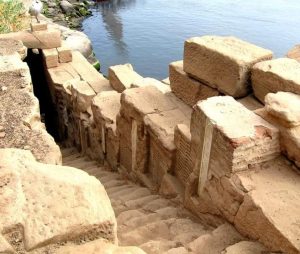
Before the completion of the Aswan High Dam in 1970, the Nile flooded the surrounding plains each year in late July or August. As the waters receded in September and October, they left behind a blanket of fertile silt that was essential for growing crops such as barley and wheat.

But the volume of the yearly flood varied widely. If the inundation was inadequate, only a small area of cropland would be covered with the life-giving silt, often resulting in famine. If the water level was too high, it would sweep away houses and structures built on the plain and ruin the crops. It’s estimated that the flooding was either inadequate or excessive roughly once every five years during the pharaonic period.
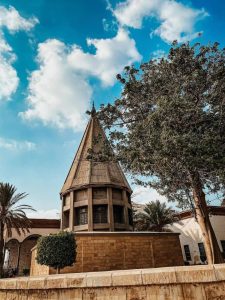
In antiquity there were at least seven branches of the Nile, while today there are only three. As some channels of the river dried up or shifted course, the locations of human settlements also changed to follow the Nile
In ancient Egypt the behaviour of the Nile could mean life or death each harvest season. So, long before the Aswan Dam was constructed to manage the flooding of the great river, Egyptians invented an instrument to measure the waters in order to predict the Nile’s behavior:
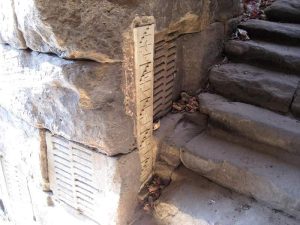
There were three kinds of nilometers, and examples of all three can still be seen around Egypt.
1. A vertical column submerged in the waters of the river, with marked intervals indicating the depth of the water [Ex. Nilometer on Roda Island, Cairo.
2. A corridor stairway of steps leading down to the Nile waters, with depth markings along the walls. [Ex. Nilometer on Elephantine Island.
3. A deep cylindrical well with culvert opening. [Ex. Nilometer at Kom Ombo, N. Aswan.
The Season of the Inundation [Akhet], was a vital part of the agricultural cycle; a lighter inundation than normal would cause famine, and too much flood water would be equally disastrous.
The ability to predict the volume of the coming inundation was part of the mystique of the Ancient Egyptian Priesthood. The same skill also played a political and administrative role, since the quality of the year’s flood was used to determine the levels of tax to be paid. This is where the nilometer came into play, with priests monitoring the day-to-day level of the river and announcing the awaited arrival of the summer flood.
Image: Measuring shaft of Roda Island Great Nilometer.
The Nile has a major role in the life of the Egyptians. The Nile flood affected the lands and inhabitants of ancient Egypt.
Most of the Nilometers during the Pharaonic and Græco- Roman period was constructed in conjunction with a temple area. They were used to record the annual inundation of the Nile. During the Graeco-Roman period, the Nilometers may have had a symbolic role in addition to its religious function and related to ritual activities.
The nilometer was a circular well roughly eight feet (2.4 meters) in diameter with a staircase leading down into its interior. Either a channel would have connected the well to the river, or it would have simply measured the water table as a proxy for the strength of the river. Seven cubits—roughly 10 feet (3.04 meters)—was the optimum height for prosperity.
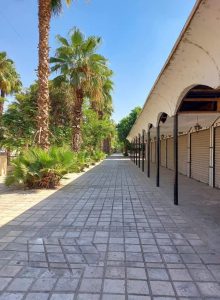
Rhoda Island Nilometer:
an octagonal marble column held in place by a wooden beam at the top that spans the width of the well. The stilling well included a staircase so that priests, who were in charge of monitoring the nilometers, could walk down and examine the column.
The nilometer on Rhoda Island dates back to 861, when it was built where an older nilometer had been, based on a design by Afraganus, a famous astronomer. The massive measuring stick had markings on it to indicate where the water level was at any given time, information the priests would use to determine what conditions the future held: drought, which would mean famine; desirable, which would mean just enough overflow to leave good soil for farming; or flood, which could be catastrophic.
Only priests and rulers, whether pharaohs or later, Roman or Arab leaders, were allowed to monitor the nilometers, and their ability to predict the behavior of the Nile was used to impress the common people. (And to determine how much money would be collected in taxes.) This is why so many nilometers were built in temples, where only priests would be able to access the mysterious instrument.
The nilometer on Rhoda Island is today housed in a modernized building. The conical roof replaced an older dome that was destroyed in 1825 during the French occupation. The interior is ornately carved, and three tunnels that once let water into the stilling well at different levels have been filled in, so visitors can walk all the way down.

Elephantine island Nilometer:
Another type of nilometer, like the one that can be seen on Elephantine Island in Aswan, had evenly spaced steps that lead straight down to the Nile, and indicator markings on the walls at different levels for each step. This one was often the first to indicate what conditions to expect, being located near Egypt’s southern border.
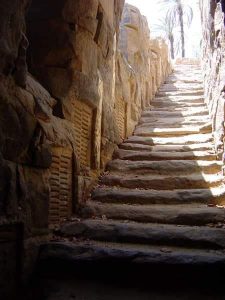
Temple of Kom Ombo Nilmeter:
A little further north, brought the water away from the Nile by way of a canal that deposited it into a cistern. And again, the indicating markers were carved into the wall, accessible by staircases for the priests and rulers who predicted the fate of the Egyptian crop.



